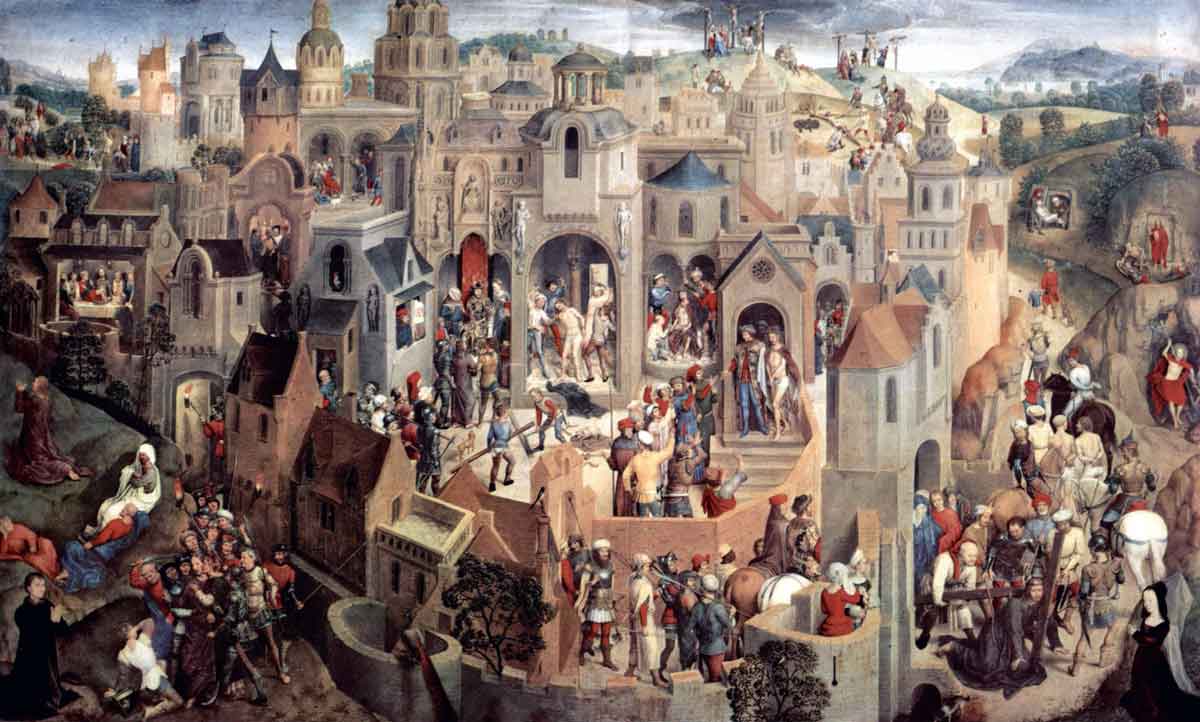FEBRUARY 10, 2024 – ST. SCHOLASTICA, ABBESS.
- St. Scholastica (543). Founder or Foundress, Patron or Patroness, Religious, Virgin. Patroness of convulsive children. (Current, Traditional) twin sister of St. Benedict
IF this Saint but little is known on earth, save that she was the sister of the great patriarch St. Benedict, and that, under his direction, she founded and governed a numerous community near Monte Cassino. St. Gregory sums up her life by saying that she devoted herself to God from her childhood, and that her pure soul went to God in the likeness of a dove, as if to show that her life had been enriched with the fullest gifts of the Holy Spirit. Her brother was accustomed to visit her every year, for “she could not be sated or wearied with the words of grace which flowed from his lips.” On his last visit, after a day passed in spiritual converse, the Saint, knowing that her end was near, said, “My brother, leave me not, I pray you, this night, but discourse with me till dawn on the bliss of those who see God in heaven.” St. Benedict would not break his rule at the bidding of natural affection; and then the Saint bowed her head on her hands and prayed; and there arose a storm so violent that St. Benedict could not return to his monastery, and they passed the night in heavenly conversation. Three days later St. Benedict saw in a vision the soul of his sister going up in the likeness of a dove into heaven. Then he gave thanks to God for the graces He had given her, and for the glory which had crowned them. When she died, St. Benedict, her spiritual daughters, and the monks sent by St. Benedict, mingled their tears and prayed, “Alas! alas! dearest mother, to whom dost thou leave us now? Pray for us to Jesus, to whom thou art gone.” They then devoutly celebrated Holy Mass, “commending her soul to God;” and her body was borne to Monte Cassino, and laid by her brother in the tomb he had prepared for himself. “And they bewailed her many days;” and St. Benedict said, “Weep not, sisters and brothers; for assuredly Jesus has taken her before us to be our aid and defense against all our enemies, that we may stand in the evil day, and be in all things perfect.” She died about the year 543.

REFLECTION: Our relations must be loved in and for God. Otherwise the purest affection becomes inordinate, and is so much taken from Him.
WORD OF THE DAY
CLERICAL CELIBACY. The practice of not being married, among those in major orders in the Church. Voluntary celibacy among the clergy goes back to the first century of the Christian era. In time, two different traditions arose in the Catholic Church. In the East, the tendency was toward having a married clergy, and as early as the Council of Nicaea (A.D. 325) the proposal to make celibacy obligatory on all the clergy was not accepted. The canonical position, in general, is that priests and deacons may marry before ordination but not after. Bishops, however, must be celibate. In the West, the canonical position of the Church has remained constant from as early as the Spanish Council of Elvira (A.D. 306). In 386, Pope St. Siricius ordered celibacy for "priests and Levites." The same legislation was passed by Pope St. Innocent I (reigned 402-17). In spite of numerous failures in observance, and even concerted opposition in some quarters, the Catholic Church has remained constant in her teaching on clerical celibacy. Enacted into canon law in 1918, the legislation was not changed by the Second Vatican Council. In its Decree on the Ministry and Life of Priests, it declared, "Celibacy was at first recommended to priests. Then, in the Latin Church, it was imposed by law on all who were to be promoted to sacred orders. This legislation, to the extent to which it concerns those who are destined for the priesthood, this most holy Synod once again approves and confirms" (Presbyterorum Ordinis, III, 16). When a man is ready for the diaconate, he is ordained either to the transient diaconate with a view to the priesthood or to the permanent diaconate. If he is going on to the priesthood, he binds himself to celibacy for life. If he is to become a permanent deacon, and is unmarried, he also binds himself to celibacy, and cannot marry in the future, although he can later become a priest. If he is a married man, he may be ordained to the permanent diaconate. Then, should his wife die, he must remain unmarried and may go on for the priesthood.
Modern Catholic Dictionary, Fr. John Hardon SJ (Get the real one at Eternal Life — don’t accept an abridged or edited version of this masterpiece!)
This article, FEBRUARY 10, 2024 – ST. SCHOLASTICA, ABBESS. is a post from The Bellarmine Forum.
https://bellarmineforum.org/february-10-2024-st-scholastica-abbess/
Do not repost the entire article without written permission. Reasonable excerpts may be reposted so long as it is linked to this page.

